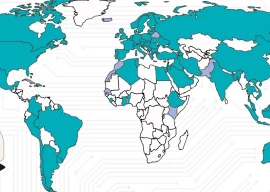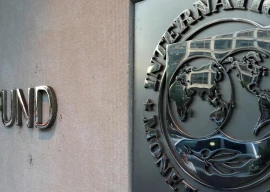
“To achieve this goal, China has implemented an eco-industrial park (EIP) as a mainstream strategy of a circular economy since the turn of the new century,” he said.
While highlighting the significance of Industrial symbiosis, Afridi referred the ‘Eco-Industrial parks’ (EIP) as a community of manufacturing and service businesses, seeking enhanced environmental and economic performance.

He said China took the lead as the world’s champions in terms of industrial output and became the true ‘world plant.’ “China promoted industrial development in the form of ‘Economic and Technological Development Areas’ (ETDA) and then ‘High-tech Parks’ (HTP),” he said, adding that till the end of 2013, China had around 300 national industrial parks, including 210 ETDAs and 113 HTPs, and recently, a great number of success stories in industrial symbiosis had emerged.
He suggested two ways in which Pakistan could implement the concept of Economic Industrial Zones (EIZs).
One was to turn the area around an existing mega-industrial unit into an EIZ, where smaller units should be encouraged to utilise outputs of bigger units; while the other way was to construct new industrial zones from scratch.
In the latter approach gives the opportunity to design the park with efficiently linked industrial units designed to achieve maximum economic, social and environmental benefits.
Afridi, however said that the government would need to provide some sort of incentives to industrialists to attract investment. “Something on the lines of carbon credits would be helpful,” he said.
“The government can give green tax credits (GTC) in which the industries are asked to pay less tax on the basis of manufacturing their products in an environment friendly manner and utilising wastes which would otherwise be dumped untreated,” he added.
He said that the first step towards achieving the setting up of an EIZ was planning and designing. “That needs to be carefully laid out and consulted with EIZ experts, in view of the locally available resources. The next step is to attract investment for the project.”
He said the government could look towards other nations for help and guidance in this regard. “China, in particular, could be of much use since it already has had an extensive experience during the past 15 years.”
“Pakistan also needs to build its own expertise and experience in EIZs. The political leadership and policymakers should explore all possibilities to revive industry and the economy in a sustainable manner,” Afridi added.
Published in The Express Tribune, December 2nd, 2015.
Like Business on Facebook, follow @TribuneBiz on Twitter to stay informed and join in the conversation.





























COMMENTS
Comments are moderated and generally will be posted if they are on-topic and not abusive.
For more information, please see our Comments FAQ